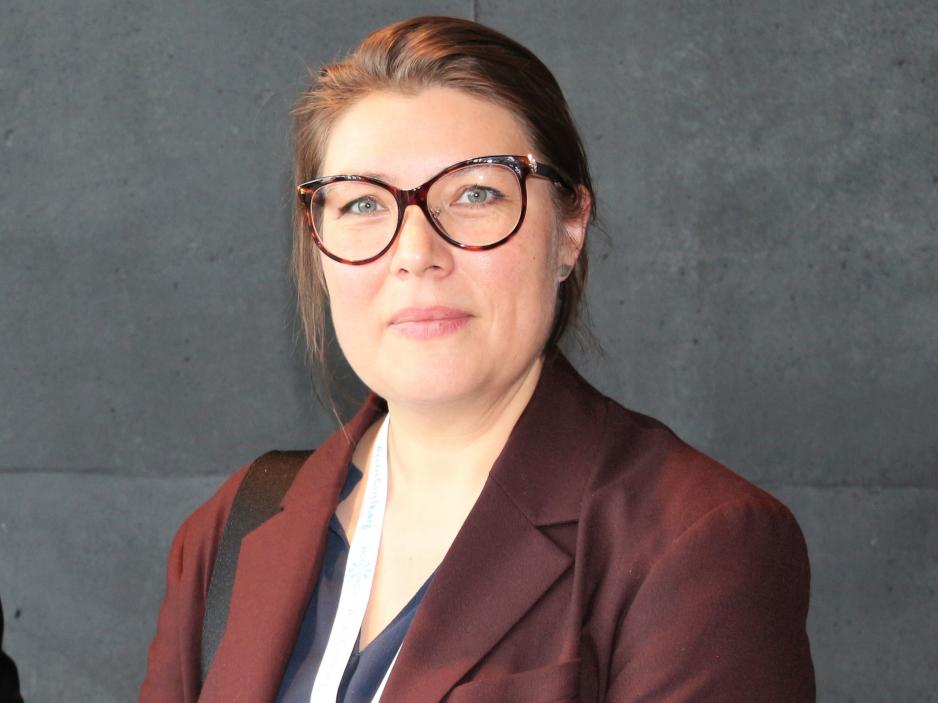Focus on Arctic Challenges at COP29

The UN's climate conference 2024, better known as COP29, is now taking place in Baku, Azerbaijan. The Arctic is yet again on the agenda, this time focusing on the cryosphere and wildfires, particularly from an Indigenous perspective.
The UN Climate Change Conference or COP (Conference of the Parties) is organized annually under the auspices of the UN for countries that have signed the UN Climate Convention or the UN Convention on Biodiversity.
This year's edition takes place in Baku, Azerbaijan, from November 11th to the 22nd.
Where there is talk of climate, there is almost always talk of the Arctic. During this year's conference, the Norwegian chairship of the Arctic Council sheds light on the cryosphere and wildfires in the Arctic.
A message from the frozen world
On November 11th, the Norwegian chairship of the Arctic Council organized a side event at the climate conference. Under the title "A Message from the Frozen World," politicians and researchers highlighted how the melting cryosphere impacts not only the Arctic and other "frozen" regions but the entire world.
Facts about the cryosphere
The cryosphere is the part of the earth's surface where water is found in solid form, either in the shape of glaciers, snow, ice, permafrost, or frozen water.
70% of the earth's freshwater exists as glaciers and ice sheets.
10% of the earth's land area is covered by glaciers and ice sheets.
The rate of sea level rise in the past decade (2014-2023) has more than doubled since the first decade of satellite measurements (1993-2002).
Thirty million tonnes of ice are lost by the Greenland ice sheet on average every hour throughout the year.
The Greenland ice sheet contains potentially 7.4 meters of sea level rise.
Two billion people depend upon meltwater from glaciers as a seasonal water source.
Source: the Arctic Council
Changes in the cryosphere bring about complications for the entire world. For example, rising sea levels could flood low-lying coastal areas and create erosion, glaciers that provide freshwater for millions of people are melting, and increased activity within Arctic shipping and mining contributes to pollution.
"The researchers are clear: Changes to the frozen world impact every living being on the planet," said Norwegian PM Jonas Gahr Støre during his opening speech at the event.
He highlighted that indigenous peoples, in particular, are forced to move due to marine abrasion, flooding, and wildfires and that we must utilize both research and indigenous knowledge to solve issues regarding the cryosphere.
Living with fire
The Arctic Council also organized a side event on wildfires and how indigenous knowledge can be crucial in the fight against them.
The number of wildfires in major parts of the Arctic has more than tripled since 2018. In June this year, wildfires in the Arctic led to emissions of about 8,2 megatonnes of carbon.
The Arctic is expected to be plagued by wildfires to an increasing extent, even in areas that haven't previously been affected.
In its COP29 event, the Arctic Council highlighted that the areas managed by indigenous peoples exhibit the lowest incidence of wildfires. These areas contribute to maintaining carbon stocks and enhancing biodiversity.
During the event, it was discussed how indigenous knowledge could be integrated with modern fire management strategies.
Indigenous knowledge of climactic cycles, fire behavior, topography, and vegetation can be utilized to reduce the extent of destructive wildfires and climate emissions.
AMOC collapse
Heidi Sevestre from the Arctic Monitoring and Assessment Programme (AMAP) during the Arctic Council said in the former event that to avoid irreversible impacts on the cryosphere and from the cryosphere, the global temperature rise must be kept below 1.5 degrees.
She says that a consequence could be a collapse in the AMOC (Atlantic Meridional Overturning Circulation), an important part of the Atlantic Ocean's ocean circulation. It ensures that warm water is transported north close to the sea surface and cold water is transported southwards deep in the sea. If the AMOC collapses, northern Europe could quickly experience a dramatically colder climate.
The Norwegian Meteorological Institute writes, "There are findings from the past that indicate that the AMOC has collapsed before. When the earth was on its way out of the last ice age, there was a period of sudden and intense cooling of the climate that lasted for 1,200 years, called the Younger Dryas."
"To succeed with the 1.5 degree aim, we must reduce climate emissions by 42% by 2030," states Sevestre.

Sara Olsvig is head of the indigenous organization Inuit Circumpolar Council (ICC), a permanent Arctic Council participant. She highlighted the importance of including indigenous peoples in decision-making processes during this year's edition of the UN climate conference. (Photo: Trine Jonassen)
The Indigenous perspective
Sara Olsvig from the Indigenous organization Inuit Circumpolar Council (ICC), a permanent Arctic Council participant, contributed an important Indigenous perspective to the debate. She highlighted that the UN does not always succeed in including Indigenous peoples.
"We are people of the cryosphere. You cannot talk about the cryosphere, write about it, or adopt declarations or resolutions about the cryosphere if Indigenous peoples are not part of it and if Indigenous people's rights are not fully recognized in these texts," she said.
She highlighted that the UN General Assembly recently adopted a resolution for 2025-2034 called "Decade of Action for Cryospheric Sciences."
"Indigenous peoples are mentioned one tokenistic time, and Indigenous rights aren't mentioned once. Human rights aren't mentioned once. We see this time and time again when indigenous peoples are not included in decision-making processes," says Olsvig.
She emphasizes that indigenous peoples have the right to influence their own economic, cultural, and social future but that the UN often fails to secure these rights. Regarding the cryosphere, the indigenous perspective is particularly important, she says.
"To us, the cryosphere equals rights. The cryosphere equals infrastructure."
"Indigenous peoples must be at the table when decisions are made on the cryosphere," concluded Olsvig.


